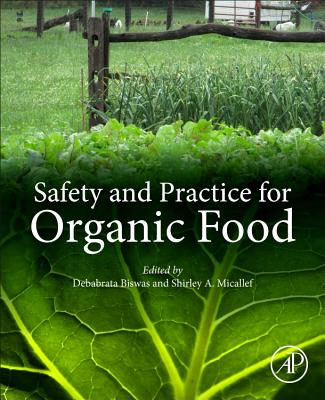Risk Assessment Methods for Biological and Chemical Hazards in Food
暫譯: 食品中生物與化學危害的風險評估方法
Pérez-Rodríguez, Fernando
- 出版商: CRC
- 出版日期: 2020-10-29
- 售價: $7,800
- 貴賓價: 9.5 折 $7,410
- 語言: 英文
- 頁數: 545
- 裝訂: Hardcover - also called cloth, retail trade, or trade
- ISBN: 1498762026
- ISBN-13: 9781498762021
海外代購書籍(需單獨結帳)
相關主題
商品描述
Risk assessment has been extensively developed in several scientific fields, such as environmental science, economics, and civil engineering, among others. In the aftermath of the SPS and GATT agreements on the use of risk analysis framework in food trade, signed in the 1990s, international organisations and governments adopted risk assessment as a science-based process to ensure food safety along the food chain. The food industry can also benefit from the use of this approach for food process optimisation and quality assurance.
Risk Assessment Methods for Biological and Chemical Hazards in Food introduces the reader to quantitative risk assessment methods encompassing general concepts to specific applications to biological and chemical hazards in foods. In the first section, the book presents food risk assessment as methodology and addresses, more specifically, new trends and approaches such as the development of risk rating methods, risk metrics, risk-benefit assessment studies and quality assessment methods.
Section II is dedicated to biological hazards. This section identifies the most relevant biological hazards along the food chain and provides an overview on the types of predictive microbiology models used to describe the microbial response along the food chain. Chapter 12 specifically deals with cross contamination and the quantitative methods that can be applied to describe this relevant microbial process. The development and application of dose-response models (i.e. mathematical function describing the relationship between pathogen dose and health response) are also covered in this section. In Section III, the book translates risk assessment concepts into the area of chemical hazards, defining the process steps to determine chemical risk and describing the uncertainty and variability sources associated with chemicals.
Key Features:
- Presents new trends and approaches in the field of risk assessment in foods
- Risk assessment concepts are illustrated by practical examples in the food sector
- Discusses how quantitative information and models are integrated in a quantitative risk asssment framework
- Provides examples of applications of quantitative chemical risk assessment in risk management
The book, written by renowned experts in their field, is a comprehensive collection of quantitative methods and approaches applied to risk assessment in foods. It can be used as an extensive guide for food safety practitioners and researchers to perform quantitative risk assessment in foods
商品描述(中文翻譯)
風險評估在多個科學領域中得到了廣泛的發展,例如環境科學、經濟學和土木工程等。在1990年代簽署的SPS和GATT協議之後,國際組織和政府將風險評估作為一個基於科學的過程,以確保食品鏈上的食品安全。食品行業也可以利用這種方法來優化食品加工和質量保證。
《食品中生物和化學危害的風險評估方法》向讀者介紹了定量風險評估方法,涵蓋了從一般概念到特定應用於食品中的生物和化學危害的內容。在第一部分中,本書將食品風險評估作為一種方法論,並更具體地探討了新趨勢和方法,例如風險評級方法、風險指標、風險-效益評估研究和質量評估方法的發展。
第二部分專注於生物危害。本部分識別了食品鏈中最相關的生物危害,並提供了用於描述食品鏈中微生物反應的預測微生物學模型類型的概述。第12章專門討論了交叉污染及其相關的定量方法,這些方法可以用來描述這一重要的微生物過程。本部分還涵蓋了劑量-反應模型的發展和應用(即描述病原體劑量與健康反應之間關係的數學函數)。在第三部分中,本書將風險評估概念轉化為化學危害領域,定義了確定化學風險的過程步驟,並描述了與化學物質相關的不確定性和變異來源。
主要特點:
- 提出食品風險評估領域的新趨勢和方法
- 風險評估概念通過食品行業的實際例子進行說明
- 討論定量信息和模型如何整合在定量風險評估框架中
- 提供定量化學風險評估在風險管理中的應用示例
本書由該領域的知名專家撰寫,是一部全面的定量方法和應用於食品風險評估的綜合性著作。它可以作為食品安全從業者和研究人員進行食品定量風險評估的廣泛指南。
作者簡介
Fernando Perez-Rodriguez undertook his degrees in Biological Science and in Food Science and Technology from the University of Córdoba in 1999 and 2002, respectively. He completed his PhD in risk analysis from the University of Córdoba (2007), which dealt with microbiological risk assessment and cross contamination in cooked meat products. He has published in the most prestigious international food microbiology and predictive microbiology journals. He has been involved in several research projects at national and international level, conducting quantitative risk assessment studies and investigating cross contamination. He is a member of the International Food Protection Association and the Spanish Society of Microbiology, and he has participated as an expert in cross contamination at different meetings organized by the European Food Safety Authority. He has also taught courses in predictive microbiology and he is professor for the Agriculture and Food Masters degree at the University of Córdoba. Currently, he is professor at the University of Córdoba and University of Pablo de Olavide (Spain).
作者簡介(中文翻譯)
費爾南多·佩雷斯-羅德里格斯於1999年和2002年分別在科爾多瓦大學獲得生物科學和食品科學與技術的學位。他於2007年在科爾多瓦大學完成風險分析的博士學位,研究主題為熟肉產品中的微生物風險評估和交叉污染。他在國際上最具聲望的食品微生物學和預測微生物學期刊上發表過多篇論文。他參與了多個國內和國際的研究項目,進行定量風險評估研究並調查交叉污染。他是國際食品保護協會和西班牙微生物學會的成員,並作為專家參加了歐洲食品安全局組織的不同會議,專注於交叉污染的議題。他還教授預測微生物學課程,並擔任科爾多瓦大學農業與食品碩士學位的教授。目前,他是科爾多瓦大學和西班牙巴勃羅·德·奧拉維德大學的教授。












